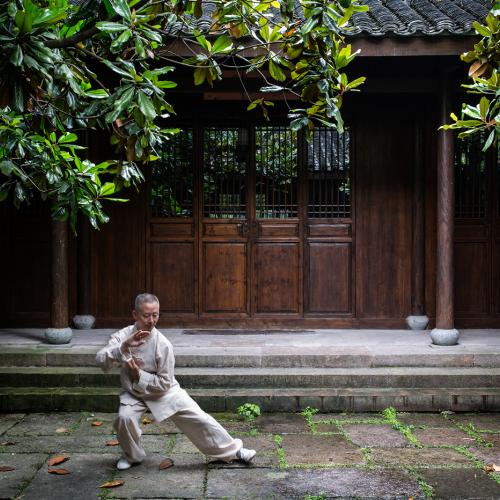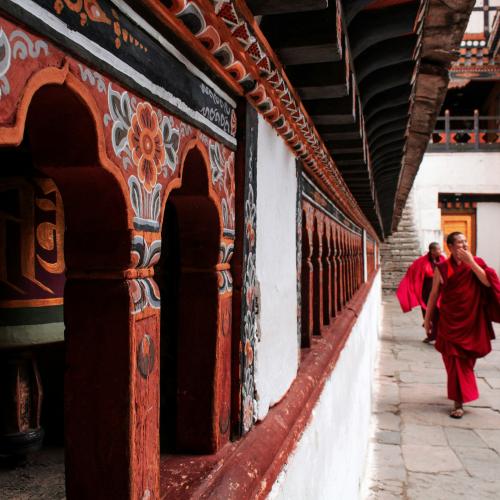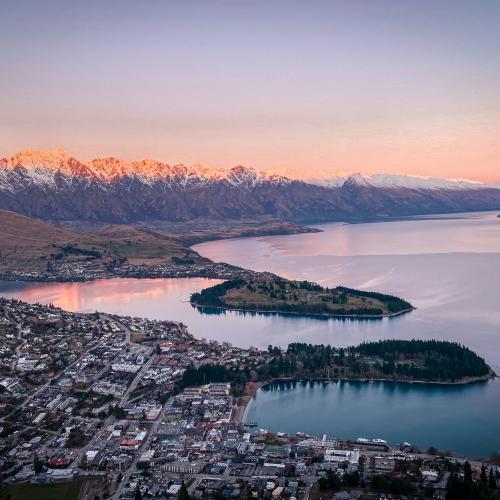Arty Stays in the Middle Kingdom
Find inspiration by checking into one of these five art-conscious properties in China.
By Helen Dalley
Amanfayun, Hangzhou
Hidden away in a valley, surrounded by tea fields and natural woodland, with access to pilgrimage circuit of seven ancient Buddhist temples, Amanfayun is just six kilometers from UNESCO World Heritage Site West Lake. Expect clay tile roofs, stone and wooden floors, Jiangnan-style furnishings and calligraphy in the rooms, suites and villas that feature twin day beds, dining areas, private message rooms and reading areas.
The hotel hosts regular art exhibitions, most recently showcasing Master Yuanxin’s traditional Chinese landscapes and a Spring Festival Art Exhibition celebrating the natural world through paintings and sculptures. The resort’s cultural heart, Fayun Place, hosts complimentary afternoon tea daily alongside free talks on everything from Buddhism to Traditional Chinese Medicine. If you want to tap into your creative side, take part in a calligraphy or paper-cutting class.
Hotel Eclat, Beijing
The boutique gem is home to the largest private collection of contemporary art in China, with more than a 100 pieces including several works from Salvador Dali; most striking is bronze sculpture, Man Riding a Dolphon, along with Andy Warhol’s iconic Marilyn Monroe prints and Shen Jingdong’s solemn saluting soldiers.
Featuring Philip Starck chairs and goose down duvets, there are more than 100 rooms and 20 suites; highlights include the Miami Suite, which features a baby grand piano, sky terrace, jet pool and dining table that seats 18. Sample modern European cuisine at George’s Restaurant – there’s a vibrant pop art menu with dishes inspired by Warhol (Campbell’s Soup) and Pollock (A Purple Splash) – then check out George’s Bar, where an extensive whisky menu awaits.
The Temple House Chengdu
Designed by Make Architects and inspired by the layout of China’s traditional courtyard homes, the Temple House is built on the site of the 1600-year-old Daci Temple and features a contemporary art collection comprising specially commissioned works by eight Chinese artists, from installations to digital art: Don’t miss Wu Haiyang’s Leaf and Feather sculptures, and He Yong Yong’s impressive bronze, Seven Sages of the Bamboo Grove.
There are 100 guestrooms, including the One-bed Temple Suite, where oval soaking tubs await behind Chinese screens, and the Two-bed Deluxe Courtyard Suite, which features an expansive living area flooded with leafy green garden views. Choose from one of four dining options, including the Michelin-starred Mi Xun Teahouse for vegetarian Sichuan cuisine, and retro-glam cocktail hideaway Jing for spicy Sichuan Mules made from vodka infused with peppercorns.
The PuXuan Hotel and Spa, Beijing
Embracing a modern, minimalist aesthetic – think muted greys, creams and artisan furniture – the PuXuan Hotel and Spa features 92 rooms and 24 suites, many with uninterrupted views of the Forbidden City. Art lovers can admire pieces in the hotel lobby, such as Chinese landscapes by Deshu Qi, or book bespoke programs at the National Museum, where highlights include Honmuwu Ding, the largest piece of bronze work in the world, and a Han dynasty jade burial suit.
Guests can expect round-the-clock access to the club lounge, or dine at Rive Gauche, where Black Angus beef short ribs and monkfish poached in olive oil are on the menu, or sample traditional Cantonese fare like spiny lobster with garlic and chili at one Michelin-starred Fu Chun Ju. You can also chill out at UR Spa, where treatments include a 3D Collagen Shock and a traditional Hufu massage.
Yangshuo Sugar House, Yangzhou
Another stunning design and art-driven hotel can be found amidst the limestone karst peaks of the Li River. This unique property, operated by Aurua, offers guests the chance to delve into one of China’s most beautiful landscapes, with architecture that marries heritage buildings with touches of locally sourced stone and bamboo to create a thoroughly modern, minimalist aesthetic.
Artworks line the walls of the cavernous public spaces, creating a juxtaposition of time and place, while the restaurant, housed in the factory complex’s former Refining Room, still features the building’s original lofted shingled rooves, with its clean contemporary lines offset by the presence of industrial -chic elements of concrete and brickwork.
This is continued in the 113-room property’s expansive gallery space, where polished concrete floors and walls meet a revolving showcase of the works of both established and emerging Chinese artists.













